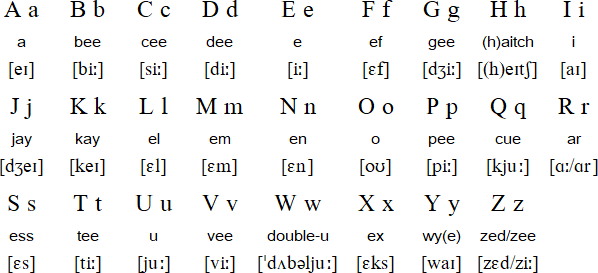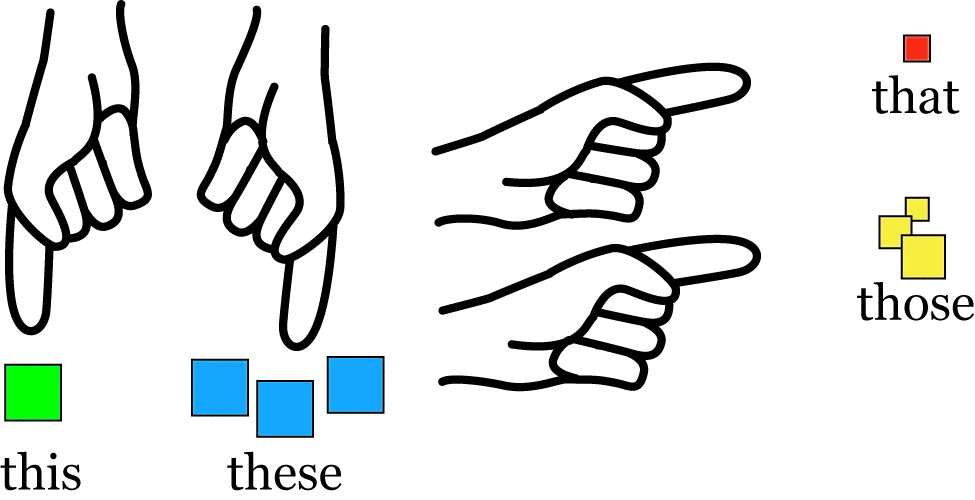LET'S SING (VAMOS CANTAR)
________________________________________________________________________
______________________________________
________________________________________________________________________
______________________________________
LET'S SAY THE ALPHABET. CLICK THE LINK BELOW
Vamos aprender o alfabeto. Clique o link abaixo.
THE ALPHABET
My wikispace
Vamos aprender o alfabeto. Clique o link abaixo.
THE ALPHABET
My wikispace
LISTENING ACTIVITY
Greetings in Passing
Para entender o texto abaixo, utilize um Tradutor Online. A tradução não sairá perfeita, mas ajudará na compreensão da mensagem global.
It is polite to greet a person you know. However, you don't
always have time to stop and have a conversation. Just remember to smile
as you say hello. A small wave is also polite. Sometimes you
pass the same person a second time on the same day. You can say
"hello again" or just smile.Tips
- Slow down to greet someone you know. You don't have to stop what you are doing (walking, working, shopping). Say an appropriate form of hello. Smile and wave.
- Hello
- Hi
- Good morning
- Good afternoon
- Good evening*
- Hey, John.
- How's it goin'?**
**Native speakers often shorten "going" to "goin" in casual greetings.
Slang greetings in passing
Using slang in a greeting is typical between close friends. Teens often use slang when they greet each other. Certain English speaking countries also have their own popular form of "hello".Listen and read
- Howdy
- Hiya
- Whazzup?
- Yo
- G'day (Australia)
TITLES
| Feminine | |
|---|---|
| Masculine |
 |
|---|
| NUMBERS: CLICK, LISTEN AND SAY |
|---|
| Cardinal numbers | Ordinal numbers | ||
|---|---|---|---|
| 0 | oh, zero, nil, love, nought * | --- | |
| 1 | one | 1st | first |
| 2 | two | 2nd | second |
| 3 | three | 3rd | third |
| 4 | four | 4th | fourth |
| 5 | five | 5th | fifth |
| 6 | six | 6th | sixth |
| 7 | seven | 7th | seventh |
| 8 | eight | 8th | eighth |
| 9 | nine | 9th | ninth |
| 10 | ten | 10th | tenth |
| 11 | eleven | 11th | eleventh |
| 12 | twelve | 12th | twelfth |
| 13 | thirteen | 13th | thirteenth |
| 14 | fourteen | 14th | fourteenth |
| 15 | fifteen | 15th | fifteenth |
| 16 | sixteen | 16th | sixteenth |
| 17 | seventeen | 17th | seventeenth |
| 18 | eighteen | 18th | eighteenth |
| 19 | nineteen | 19th | nineteenth |
| 20 | twenty | 20th | twentieth |
| 21 | twenty-one | 21st | twenty-first |
| 30 | thirty | 30th | thirtieth |
| 40 | forty | ||
| 50 | fifty | ||
| 60 | sixty | ||
| 70 | seventy | ||
| 80 | eighty | ||
| 90 | ninety | ||
| 100 | a/one hundred | ||
| 1,000 | a/one thousand | ||
| 10,000 | ten thousand | ||
| 100,000 | a/one hundred thousand | ||
| 1,000,000 | a/one million | ||
| 1,000,000,000 | a/one billion | ||
_________________________________________________________________________________
DEMONSTRATIVES
Position
* Before the noun (Vem antes de substantivo)
* Before the word 'one' (antes da palavra "one")
* Before an adjective + noun
(antes de um adjetivo + substantivo)
* Alone when the noun is 'understood'
(sozinho quando o substantivo é identificado)
* Before the noun (Vem antes de substantivo)
* Before the word 'one' (antes da palavra "one")
* Before an adjective + noun
(antes de um adjetivo + substantivo)
* Alone when the noun is 'understood'
(sozinho quando o substantivo é identificado)
Demonstrative adjectives and pronouns point out which object the speaker
means. They agree in number with the object(s) being identified, and vary depending
on distance from the speaker.
-
This, These(adj): Point out objects close
to the speaker.
This square is green. These squares are blue.
-
That, Those(adj): Point out objects far
from the speaker.
That square is red. Those squares are yellow.
-
This, That, These, Those(pron): Demonstrative pronouns that replace the objects.These squares are darker than those.
WHAT IS THIS? WHAT IS THAT?
IT'S A GREEN SQUARE. IT'S A RED SQUARE
WHAT ARE THESE? WHAT ARE THOSE? THEY'RE BLUE SQUARES. THEY'RE YELLOW SQUARES
Go to INTRO: Exercise 1; Exercise 2 ; Exercise 3; Exercise 4; Exercise 5; (INTRO)
WHAT IS A DEMONSTRATIVE PRONOUN?
IMPORTANT
MORE LEARNING
WHAT DO YOU SEE?
PLURAL- ENDINGS
________________________________________________________________________________
TEXT-TO-SPEECH WRITE LISTEN AND SAY
IVONA TEXT-TO-SPEECH
_____________________________________________________
WHERE?
WHERE IS? WHERE ARE?
PREPOSITIONS IN, ON, IN, FRONT OF, NEXT TO, BEHIND
YES/NO QUESTIONS
LANGUAGES AND NATIONALITIES
Where are you from?
LISTENING: NUMBERS AND AGES
Numbers and Ages 2 - Go to INTRO - UNIT 3
DESCRIPTIONS
UNIT 4
A QUIZ WITH CLOTHES
Men's clothes
Women's clothes
POSSESSIVES 1
POSSESSIVES 2
PRESENT CONTINUOUS
_______________________________________________________________________
(Abreviação de, ao pé da letra “do relógio”)
__________________________________________________________________________________
UNIT 7
Simple Present short answers
Furniture
There to be
Practice: furniture - there is/ there are
VISUAL DICTIONARY ONLINE
______________________________________
UNIT 8
WHAT DO YOU DO?
Talking about jobs
List of jobs
Phrases about jobs and work
Visual online dictionary
IMPORTANT
MORE LEARNING
WHAT DO YOU SEE?
PLURAL- ENDINGS
________________________________________________________________________________
TEXT-TO-SPEECH WRITE LISTEN AND SAY
IVONA TEXT-TO-SPEECH
_____________________________________________________
WHERE?
WHERE IS? WHERE ARE?
PREPOSITIONS IN, ON, IN, FRONT OF, NEXT TO, BEHIND
YES/NO QUESTIONS
LANGUAGES AND NATIONALITIES
Where are you from?
LISTENING: NUMBERS AND AGES
Numbers and Ages 2 - Go to INTRO - UNIT 3
DESCRIPTIONS
____________________________________________
UNIT 4
A QUIZ WITH CLOTHES
Men's clothes
Women's clothes
WARM WEATHER CLOTHES
POSSESSIVES 1
POSSESSIVES 2
PRESENT CONTINUOUS
UNIT 5
As horas
Pergunta-se as horas da seguinte maneira:- Que horas são?
- What time is it?
- São 9h25.
- It’s nine twenty-five.
Você pode dizer todas as horas, da forma mais simples, falando apenas os números das horas e depois os números dos minutos.
- 10h50.
- Ten fifty.
- 7h15.
- Seven fifteen.
(Abreviação de, ao pé da letra “do relógio”)
- São 11 h (em ponto).
- It’s eleven. ou It’s eleven o’clock.
- É meio-dia.
- It’s midday ou It’s noon.
- É meia-noite.
- It’s midnight.
UNIT 6
EXERCISE: HAS/HAVE - GO/GOES
___________________________________________________________
UNIT 7
Simple Present short answers
Furniture
There to be
Practice: furniture - there is/ there are
VISUAL DICTIONARY ONLINE
______________________________________
UNIT 8
WHAT DO YOU DO?
Talking about jobs
List of jobs
Phrases about jobs and work
Visual online dictionary










Dear teacher Nayla
ResponderExcluirI'm nostalgia your.
kisses Greyce Kelly Conceição
Hey, Greyce! I miss you too!
Excluir